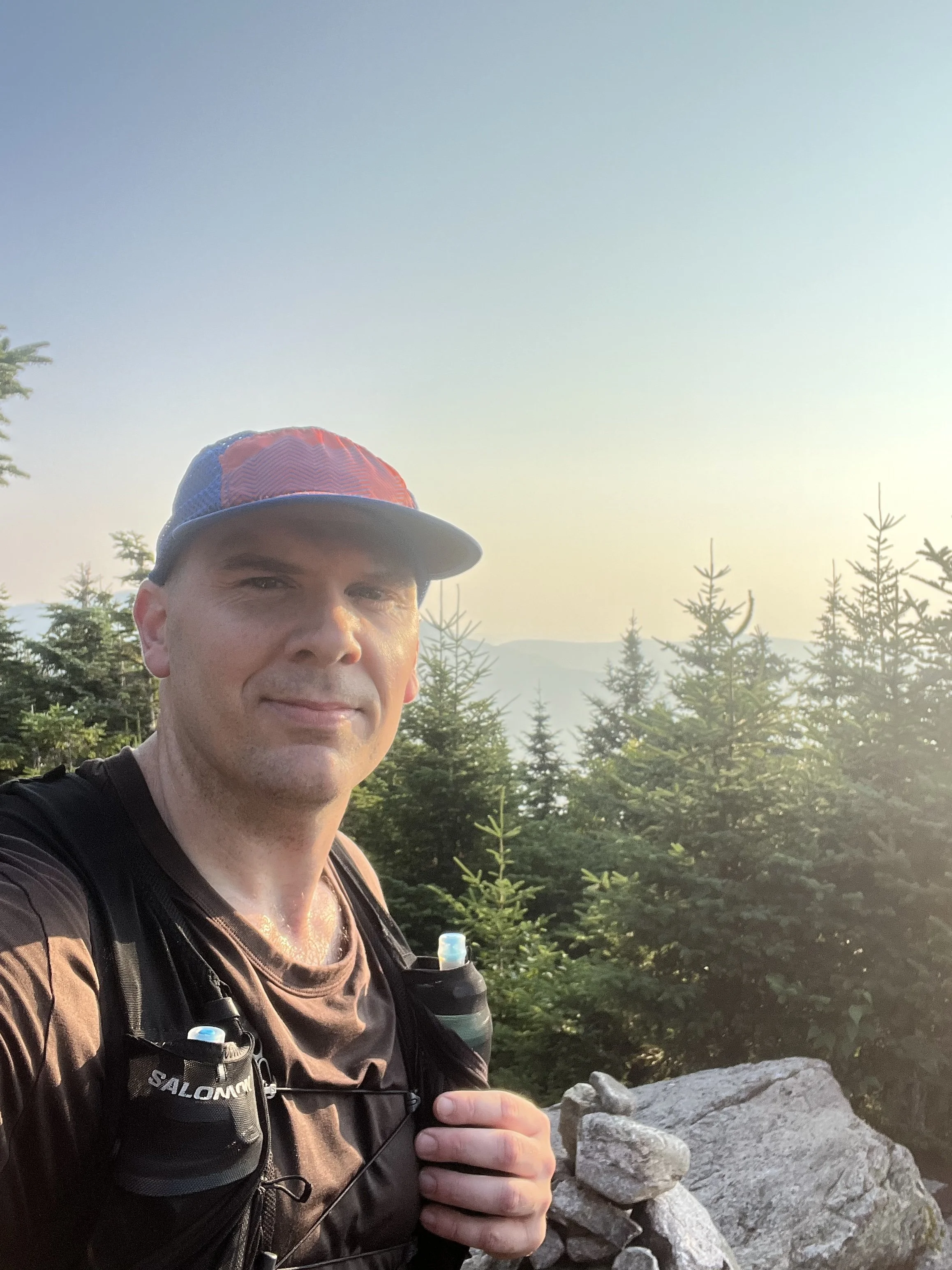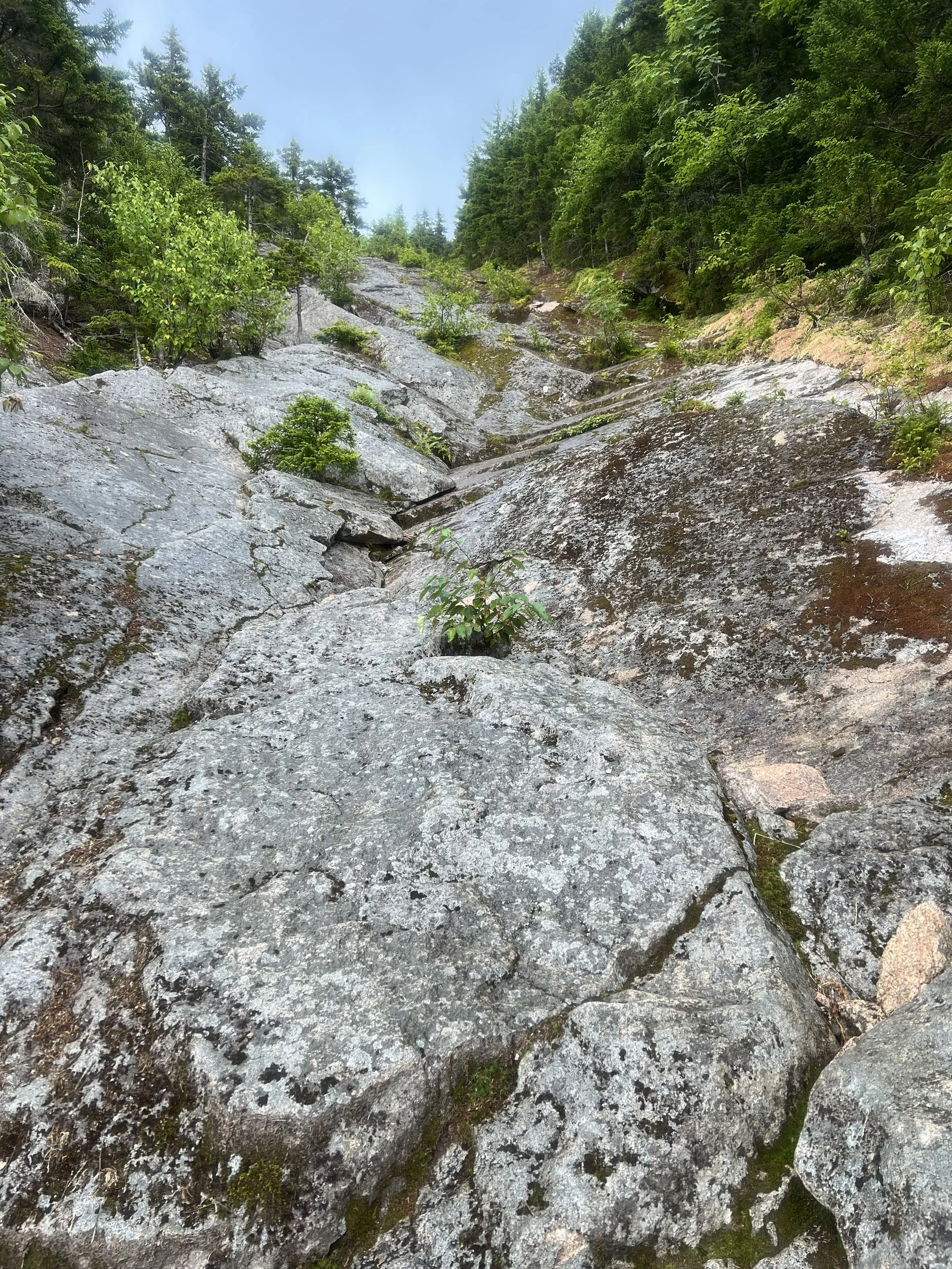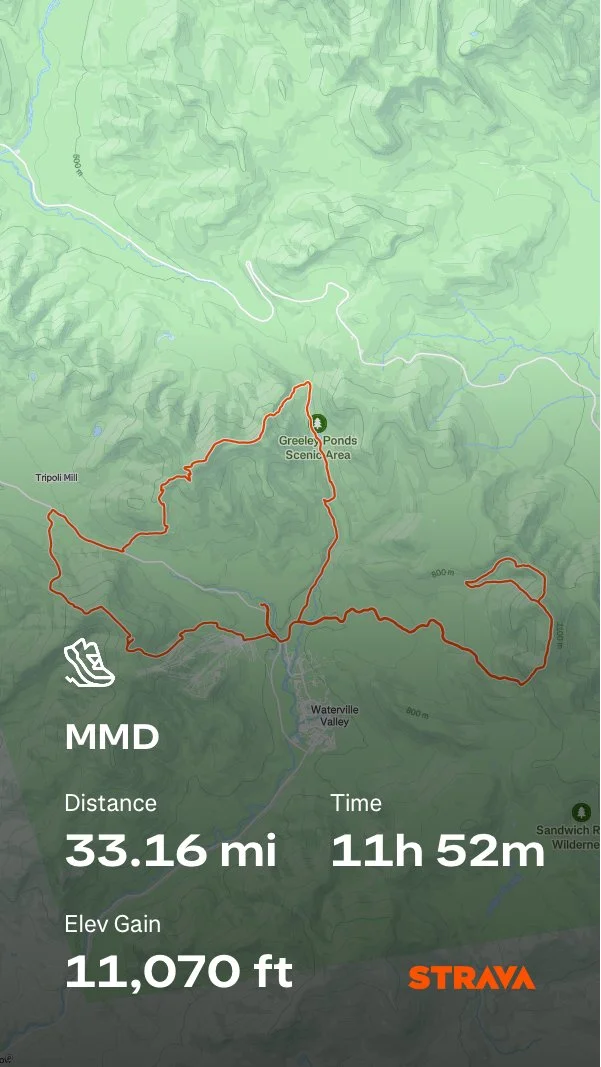MOre and MOre difficult 50k recap: 9 years in a row/finishing the 48
Every second Saturday in August, I line up for MMD—the More and More Difficult 50k—in the White Mountains. It’s as unofficial as a race can get. No bibs. No chip timing. No course markings. Aid stations are scarce. The only guarantee? Big climbs.
This year’s loop took us through Waterville Valley to bag several NH Four Thousand Footers: Tecumseh, Osceola, East Osceola, and the Tripyramids.
Training? More Like Mile Prep
I’ve always been a lower-volume runner compared to most ultrarunners. This summer I leaned even harder into that—focusing on my fast mile project and fitting in just 2–3 trail runs a week, always with plenty of vertical. Early summer was all about hills for the Mount Washington Road Race (which I ended up not running… I keep forgetting I even trained for it).
Heading into MMD, I’d done exactly three “long” runs:
9 miles at Sunapee Scramble
About the same at Loon Mountain Race
9 miles hiking Mount Washington
I wanted to see if faster running would prep my muscles, tendons, and ligaments for a long day in the mountains. Spoiler: it worked—but only because I’ve spent years building a base for efficient mountain travel.
The Start: Tecumseh & the 4K Finish
The alarm went off at 3:00 a.m., followed by a 90-minute drive and a cinnamon raisin bagel before our 5:30 start. We set off from the campground and climbed Mount Tecumseh—NH’s shortest 4K.
Tecumseh happened to be the only 4K I hadn’t climbed. I started the list in 2017, and had been sitting on Tecumseh since 2021. Crossing it off felt great—I snapped a selfie to mark the completion.
The Osceolas
After a road stretch to the Osceola Trail, we climbed both Osceola peaks. The ridge between them includes the famous chimney scramble, which is always a highlight. Then came a long, mostly downhill stretch—about seven miles—where I tried to lock into a rhythm and keep things smooth.
The Tripyramids
Next up: the South Slide. Loose rock, steep grade, and the full heat of the day. By now I had over 20 miles on the legs, and cramps threatened if I pushed too hard. I kept a steady grind, “Little Engine That Could”-style, until topping out on South Tripyramid.
From there, it was a mile-long ridge run before descending and heading for the North Slide—a steeper, more exposed, and more fun challenge. But my motivation cracked. I was ready to bail and take the “Fun Run” shortcut.
That’s when another runner (Special Forces, if you’ve read Scott Jurek’s Appalachian Trail book) passed me and gave some much needed encouragement. At the junction, I turned away from the finish and started the climb.
Rain, Rocks & Lone Peaks
A cool rain rolled in—right as I hit the steep, exposed slabs of the North Slide. My new Lone Peaks with fresh Vibram soles didn’t grip quite as well as I’d hoped, but it was still a blast.
It’s impossible to show how steep the North Slide is with just a photo.
Topping out felt like redemption. I crossed the ridge again, summiting all the Tripyramids for the second time that day—7 total 4K’s in the bag.
Descending the South Slide was much more enjoyable than climbing it. From there, it was four miles of smooth, slightly downhill running back to the campground… and a cheeseburger.
The Finish
I shuffled in just under 12 hours—beating my goal time. The route totaled 33 miles with 11,070 feet of vertical gain.
Recovery has been surprisingly smooth. My legs are tired, but not wrecked. Most importantly, I’m feeling fired up about running. Now the only question is… what to train for this fall?
—Justin Miner



